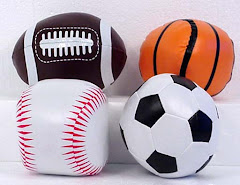
Today at St. Mary’s Elementary School we observed two children Rowen and Anthony. Both of these children are six years old and are in kindergarten. One would think that since both of these kids are the same age they would have the same ability; but this is not the case. Based on my observation both the kids had no problem completing the skill of sliding based on the criteria from the worksheet. On the other hand the other two skills were a little different. Anthony had no problem completing the horizontal jump, but Rowen had to be taking to the side in order to perfect this skill. The part she had to work on was reaching full extension above her head; but once the group pulled her aside, and helped her she was able to show all the steps to completing the skill successfully. The last skill, which I believed to be the hardest one, was the leap. I believe this was the most difficult skill, for its two motor skills in one; a leap is a skip and a jump. Combining these two skills make it difficult for children to grasp on their own. Rowen had difficulty with the first criteria, taking off on one foot and landing on the opposite foot. On the other hand, Anthony had difficulty with the second criteria, which is a period of time where both feet off the ground. Although both these children had difficultly the group did a great job realizing their difficulties and taking the children aside to work on these skills.
As important it is for us as the “college kids” to connect with these children, it is just as important for the children to connect with us. I feel as though that the environment in which we are connecting with these kids makes a huge difference. I believe the best connection with the 5th and 6th graders takes place in the gym, when we challenge them to knockout, for it is a game they enjoy as well as a game that we can play with them. Whereas connecting with the preschoolers is best taking place in the class room when they are in groups of 2 or 3, for when they get to the gym they want to run around. In the class room you can talk to them and find out what kind of games they like so you can play with them when you get to the gym. A “teaching strategy” that I have been trying to work on is connecting with the children outside the gym therefore, when we finally get to the gym, they are more likely to enjoy the game you bring, for they trust you outside the gym.
After being at St. Mary’s for the past three weeks, there are strategies that work and don’t work when capturing their attention. For example, when starting a game giving them a question that they can answer negatively doesn’t work because they get off task. Grabbing their attention means being loud and knowing what you are going to say, for if you don’t understand what you are explain they will not understand either.








